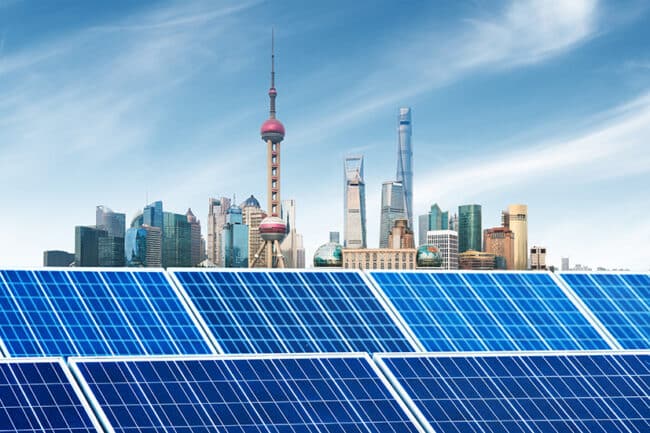For years, the United Kingdom has been regarded as a global leader in clean energy, investing heavily in renewable energy and moving toward a greener economy. However, a turning point looms on the horizon: China, once criticized for its fossil fuel dependencies, is redefining its image as a superpower in renewable energy. With colossal investments in solar, wind, and other green technologies, it could well dethrone the United Kingdom and offer a real energy revolution. It’s time to explore how this change could influence our lifestyles, economy, and environment.
A Rapid Growth in Renewable Energy

China added as much new clean energy generation capacity in the first half of this year as the United Kingdom produced from all sources last year. This spectacular advance is part of the rise of wind and solar energy in the country, which is the largest greenhouse gas emitter in the world.
Produire des carburants de synthèse avec de l'électricité
— Révolution Énergétique (@RevolutionEnerg) July 31, 2024
OU
recharger directement les batteries des voitures électriques ? ? https://t.co/hcHSW57GqF
A Significant Reduction in Fossil Fuels
In July of this year, electricity production from coal and natural gas fell by 5% in China. This trend is corroborated by the latest data from the Centre for Energy and Clean Air Research (CREA), indicating that China’s energy transformation could represent one of the best global hopes for avoiding climate catastrophe.
Undisputed Leadership in Green Technologies
According to Li Shuo, director of the China Climate Hub at the Asia Policy Institute, China is leading the way ahead of all its competitors in green technologies. Last year, the country installed a record 293GW of wind and solar generation capacity. By 2026, solar energy will become China’s main energy source, even surpassing coal.
Success of Electric Vehicles
The production of electric vehicles is also experiencing rapid growth. In July, more than half of new models sold were hybrids or fully electric. At the same time, the steel industry is evolving with zero permits issued for coal plants in the first half of this year.
Declining Greenhouse Gas Emissions
The persistent boom in clean technologies suggests that China’s greenhouse gas emissions may have peaked as early as February of this year. Such a development would be a significant upheaval for the global climate, given that China is responsible for about a quarter of global carbon emissions.
Commitment and Future Prospects
China committed in 2020 to ensure its emissions peak before 2030, but analysts suggest that carbon neutrality could potentially be achieved as early as 2025. To limit global warming to 1.5°C above pre-industrial levels, global emissions must be halved by 2030.
Challenges and Potential Risks
Although China’s emissions have decreased over the year, a rebound in carbon-intensive sectors like construction could reverse these gains. Economic uncertainties and political decisions, such as those from the United States regarding their commitment to the Paris Agreement, will also influence China’s future emissions.
Regardless of the challenges, China’s energy transition represents a crucial turning point for global climate efforts. If the country can maintain this momentum, it could provide a powerful and inspiring example for the rest of the world.
Articles similaires
Thank you!
We will contact you soon.














